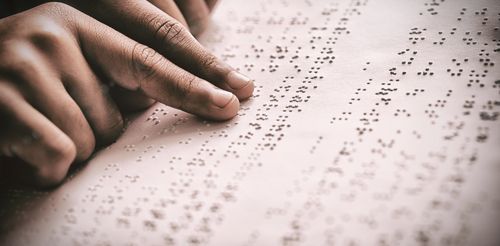 Your church probably has a lot to offer everyone who comes in the door. Taking steps to ensure that all people can access the building and services is a vital step in extending hospitality. You may not always do everything perfectly to address every need of every individual, but there are many small changes you can make so that people who are visually impaired feel safe, comfortable and welcome.
Your church probably has a lot to offer everyone who comes in the door. Taking steps to ensure that all people can access the building and services is a vital step in extending hospitality. You may not always do everything perfectly to address every need of every individual, but there are many small changes you can make so that people who are visually impaired feel safe, comfortable and welcome.
Quality Sound
People who don't have the benefit of one of their senses tend to depend more readily on the others. You can't control all extraneous noise around congregants, but you can make sure that everything that goes on in the service is properly projected. You need a good sound system so that everything the microphones pick up can be heard everywhere in the meeting hall. It's also a good idea to have headphones available for people who want to use them to minimize aural distractions.
Sign Updates
One thing that people with sight often take for granted is the ability to navigate a building simply by following the directions listed on signs. To include visually impaired guests, make sure that each sign is also written in braille so that everyone can read them. This practice also ensures that your public building is ADA compliant.
Textured Walkways
It's not just the inside of your building that needs to be accessible. You likely already have ramps near at least one if not all of your entrances. Upgrade the walkway by adding tactile paving at the bottom and top of each ramp's slope. These bumps, usually found at the border between sidewalks and streets, indicate a change in elevation to those who can't see the ramp and make it easier for them to walk safely and without incident.
Readable Materials
Have large-print materials available. Better yet, make all printed materials available online so that those who have difficulty seeing fine print can magnify it on their devices and those who can't see at all can use the adaptations in their devices to follow along. This also applies to any information you project on a screen before, during or after the service:
- Announcements
- Readings
- Song lyrics
- Scriptural references
Image Descriptions
Guests who have readers on their devices often miss out on the benefit of images that lack descriptors. A simple way to get around this is to add an image description to the content of the message. On your website, you can imbed alt text for each image into the HTML source code. These measures improve the accessibility of your website as well as your social media accounts.
Community Education
Any time you make changes, there are going to be a lot of questions about the reason behind them. Be prepared to answer concerns by being well informed. The church staff members shouldn't stop at their own education, though. The whole community needs to be informed. For example, you can host classes about the role that service dogs play and the basic etiquette people should abide by when they encounter someone with a service animal. The more your frequent attendees are informed about accessibility, the more seamlessly the appropriate measures are likely to be adapted and practiced.
Most churches want everyone who visits their services, peruses their websites and follows their social media accounts to feel welcome and included. Accessibility upgrades can go a long way toward accomplishing this goal. What seems like a simple change to those who don't have to think about being able to benefit from all they can see can mean the world to someone who is visually impaired. Making these changes extends hospitality by putting your welcome statement into action.



